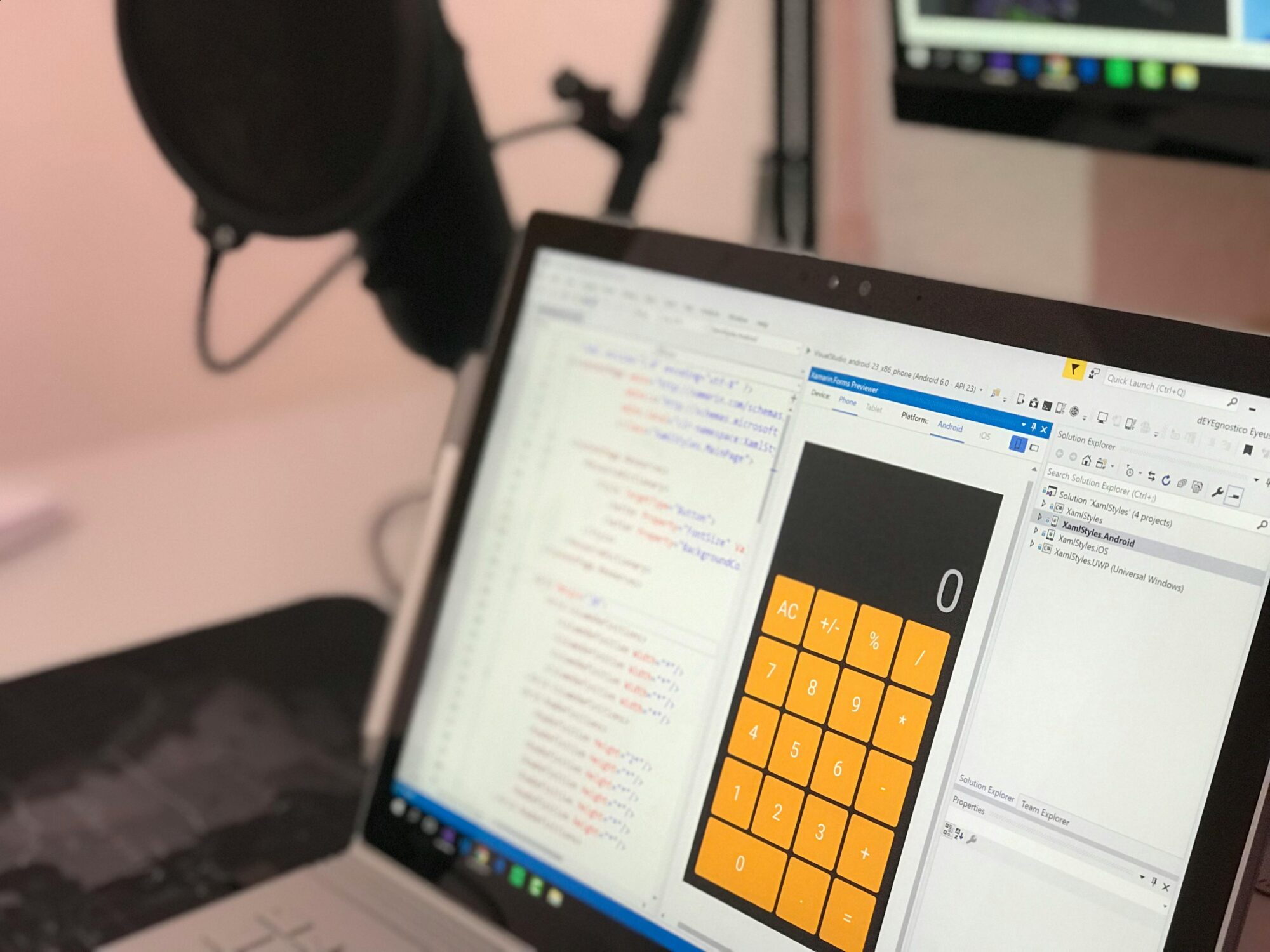Budget-Smart Software Implementation: Expert Cost-Saving Strategies
Implementing software on a budget can be challenging, but it’s not impossible. This article presents expert-backed strategies for cost-effective software implementation. Learn how to prioritize features, optimize resources, and leverage smart techniques to achieve successful software deployment without breaking the bank.
- Prioritize Core Features for Day One Launch
- Invest in Thorough Discovery Phase
- Empower Your Team Through Internal Training
- Align Development with Business Priorities
- Gamify Budget Management for Team Engagement
- Validate with Design-First Prototyping
- Choose Modular Platforms for Flexible Solutions
- Optimize Infrastructure with Shared Environments
- Implement Continuous Budget Tracking and Automation
- Link Agile Sprints to Corporate Results
- Focus on Essential Features First
- Build Core Functionality Before Custom Integrations
- Utilize Open-Source Solutions for Cost Savings
- Standardize Processes to Reduce Customization Costs
- Create Early Mockups to Validate Ideas
- Hire Specialized Freelancers for Targeted Tasks
- Test Standard Features Before Custom Development
- Automate Routine Tasks for Long-Term Savings
Prioritize Core Features for Day One Launch
A few years ago, we were implementing a custom scheduling module for a mid-sized healthcare network. The original proposal was ambitious: multi-location syncing, predictive analytics, real-time rescheduling, and integrations with half a dozen EHR systems. Midway through, we realized we were tracking 20% over budget and at least a month behind schedule.
The turning point came when we held a brutal, no-fluff meeting with stakeholders and asked one question: “What do you need on Day 1 to go live without breaking workflows?” That single conversation helped us split the project into “Must-Have Now” and “Nice-to-Have Later” categories. We delayed 30% of the planned features to phase two.
This decision cut implementation costs by nearly 25% without sacrificing stability or compliance. Because we focused only on critical workflows, user adoption during rollout was stronger, with over 90% of users fully onboarded within two weeks.
If you’re trying to control costs without hurting quality, here’s some advice: Don’t trim QA, don’t skimp on testing, and don’t pick cheap developers to save short-term cash. Instead, ruthlessly prioritize what truly matters for version one. Ship the product, learn from feedback, then scale.
Overscoping is where most budgets bleed out, not on tools, but on features no one uses. Build what your users need, not what your spec sheet dreams up.
John Russo, VP of Healthcare Technology Solutions, OSP Labs
Invest in Thorough Discovery Phase
Budget management in a software implementation project is rarely about cutting costs. It’s about spending intelligently. One approach that has consistently worked for me is investing early in a strong discovery and planning phase. I know that sounds like Project Management 101, but more people miss it than you’d believe.
A while back, I was leading an implementation for a mid-sized HRTech firm. Instead of jumping straight into development, we spent three weeks aligning with every stakeholder. Not just the C-suite, but actual end-users. We mapped real workflows, spotted disconnects in existing systems, and most importantly, trimmed down a bloated feature list that no one really needed on day one.
The cost-saving measure? We shifted from building a full-fledged custom module to integrating an existing third-party tool for employee surveys. It saved us around 18% of the initial development budget and shaved three sprints off the timeline. And not once did quality take a hit. All because the team had clarity, the roadmap was leaner, and delivery was much smoother.
I often tell clients: Your biggest savings don’t come from cheaper resources. They come from better decisions made early. So if I had to suggest one thing, it’s this: Don’t rush discovery. It’s not overhead, it’s where you protect your budget and your outcomes.
Pratik Mistry, EVP – Technology Consulting, Radixweb
Empower Your Team Through Internal Training
One strategy that helped us stay under budget during a full-stack marketing automation platform implementation was reducing our dependence on overpriced consultants. We trained our junior developers and even some content staff on key aspects of the tool using vendor-supplied sandbox environments. This required no extra training budget. We simply scheduled 90 minutes a day for two weeks. The result surprised even me. Our staff gained hands-on experience, we saved over $20,000 in contractor fees, and ownership remained internal.
This approach isn’t about being frugal. It’s about fostering competence. Most software vendors aim to upsell their “expert” services, and many teams accept. I don’t. I prefer to invest in my team’s learning. That one-time training builds institutional knowledge and prevents technical debt. The short-term investment paid off later as well. When bugs emerged post-implementation, our team resolved them without contacting support. There were no tickets and no downtime. This kind of budget-conscious, team-focused approach builds long-term capability. If you have a willing team, rely on them before outsourcing.
Cameron Prockiw, Founder, Nerder
Align Development with Business Priorities
In one of our software implementation projects, we managed the budget effectively by aligning development milestones with business priorities from the very beginning. This approach meant we weren’t just tracking costs but actually tying expenditure to outcomes, which helped us avoid investing in low-priority features early on. One of the most effective cost-saving measures we used was leveraging open-source frameworks and libraries wherever appropriate. By doing this, we eliminated the need to build certain components from scratch, which saved both time and money without compromising quality. I always recommend this approach to others because it accelerates development while still allowing for customization and scalability — critical factors for long-term sustainability.
Igor Golovko, Developer, Founder, TwinCore
Gamify Budget Management for Team Engagement
By sheer accident, I learned about budget management, and it turned out to be the game changer.
When we were running a very tight project, we didn’t have enough money to buy the project management tools that everyone was talking about. So we created a simple tracker with a 2-hour timeline. That “limitation” was our surprise feature.
The breakthrough moment? We started treating our budget like a video game scoreboard. Every dollar saved unlocked the next level. The team got competitive about finding efficiencies. Suddenly, everyone was hunting for waste like it was buried treasure.
My weirdest cost-saving move? We eliminated all status meetings. Instead, we used async video updates — 2-minute recordings showing actual progress. We cut meeting time by 80%, but communication improved because people had to show real work, not just talk about it.
Here’s the kicker: We started “budget dating” our features. Every feature had to justify its cost on the first date. If it couldn’t prove its worth in 5 minutes, it got swiped left. This killed feature creep before it started.
The rule that changed everything: “If you can’t explain the ROI to your grandmother, don’t build it.” Simple features that solve real problems always beat complex ones that impress developers.
Stop managing budgets. Start designing them.
Cache Merrill, Founder, Zibtek
Validate with Design-First Prototyping
When managing software implementation — whether for a client or internal product — the key is ruthless clarity on what actually moves the needle. The biggest budget killer? Building too much, too soon. We flipped that by anchoring every project around a functional MVP that proves value fast before scaling.
One of the best cost-saving moves we’ve used: design-first prototyping with real user flows, but without a single line of backend code. Tools like Figma + clickable prototypes allow you to validate UX, logic, and even stakeholder buy-in before touching development. For one client, this cut their development hours by nearly 40% because half the stuff they thought they needed turned out to be fluff once users interacted with the mockups.
My advice? Front-load thinking, not building. Validate pain, pressure-test UX, and don’t start coding until the path is clear. You’ll save money, avoid rework, and actually launch something people want.
Daniel Haiem, CEO, App Makers LA
Choose Modular Platforms for Flexible Solutions
Budget management during software implementation is always a balancing act, but one approach I’ve consistently found effective is being ruthless about clarity from day one. On one particular project, we were rolling out a system across multiple departments, each with slightly different requirements. Instead of building a completely custom solution, which would have been costly and time-consuming, we invested in a modular platform with built-in flexibility. This allowed us to configure rather than code. It trimmed both the upfront development time and long-term maintenance costs. The real win was that it didn’t compromise the user experience. In fact, it allowed each team to feel like the system had been tailored to their needs, without the price tag of a bespoke build.
I always suggest this approach to others because so many projects spiral financially due to unclear scope or over-customization. Start with a clear definition of what truly matters, involve your users early, and find smart technology that flexes without breaking the bank. You don’t have to spend more to deliver more. You just need to spend smarter. That kind of discipline doesn’t just protect the budget; it builds trust across the board. People see that you’re serious about value, not just delivery.
Tashlien Nunn, CEO, Apps Plus
Optimize Infrastructure with Shared Environments
In one B2B SaaS rollout, our most brilliant budget win came from setting up a shared staging environment across five parallel clients. Instead of spinning up individual test servers per project, we containerized each client’s build with isolated configurations on the same cloud instance. That alone sliced around 40 percent off our monthly infrastructure bill without affecting product stability.
What made it work was rigid scheduling. Only one development team pushed updates at a time. We rotated testing windows, and no environment was live for more than three hours at a stretch. That structure kept our team nimble, our deployments predictable, and our operations budget leaner than ever.
The real lesson was psychological. Most teams overspend early to feel in control. But budget control doesn’t come from spending more. It comes from knowing exactly what your team must control and what they can creatively let go. If your team doesn’t fully understand your architecture costs, it’s too early to scale.
So I always suggest this: Before buying anything new, ask if your team can work around it for two weeks. If they can, they probably always could.
Implement Continuous Budget Tracking and Automation
I managed the cost of software implementation by using bottom-up or zero-based budgeting with continuous budget tracking and variance reporting. My first cost-saving measure — regression testing and deployment automation via CI/CD — saved significantly without jeopardizing quality.
At planning time, I built the budget from scratch (labor, licenses, hardware, contingency), and documented each line by reason on a scope and business value basis. We monitored actuals vs. estimates weekly, highlighted variances early, and allowed for timely correction in direction. There was transparency of finances — stakeholders could see it, which encouraged accountability and earlier recognition of risk.
To cut costs without compromising quality, I employed CI/CD automation for compilation, testing, and deployment. This reduced the overhead of manual testing by up to 30-40%, sped up release cycles, and detected defects earlier. Most significantly, human testers were freed from performing low-level automated tests and could focus on exploratory and edge-case testing of high quality. Automation offered repeatable, consistent coverage and delivered a high ROI.
I would recommend this approach since once CI/CD pipelines are in place, they automatically scale, reduce human error-prone steps, and increase speed and quality. Together with budget control and transparency, this implies that you will get there on time, on budget, and without any compromise on quality.
Sos Denes, Software developer, RabIT Solutions Zrt
Link Agile Sprints to Corporate Results
On one of our major software deployment projects, the most efficient approach we handled the budget was by organizing development into agile sprints directly linked to corporate results, not features. We concentrated on what truly influenced consumers and stakeholders rather than building everything at once.
Using no-code and low-code systems for internal tools was one cost-saving strategy that genuinely changed things without sacrificing quality. For instance, instead of having backend developers develop operational dashboards from scratch, we prototyped and quickly released using no-code tools. This gave engineering capability for more sophisticated, customer-facing elements where quality and performance were not negotiable.
I advise this strategy since it matches technical capabilities with their best worth. You uphold high standards, speed delivery, and save money where it matters most. In today’s world, wise resource allocation is a strategic choice rather than only a financial one.
Asadullah Khan, Founder & CEO, Trango Tech
Focus on Essential Features First
We manage budgets by narrowing the scope to what users actually need in the first release. Before writing a single line of code, we involve end users in early discussions to define what truly matters. This trims unnecessary features and prevents over-engineering.
One cost-saving move that has worked well is phasing features based on usage priority. Instead of delivering everything upfront, we build the essentials, get feedback, and then decide what to add next. It reduces upfront spending and keeps the team focused.
We also ask clients to test working features early. Getting real feedback mid-way catches issues before they become expensive. That alone has saved both time and budget, without compromising quality.
This approach keeps the project lean, focused, and aligned with actual use, not assumptions.
Vikrant Bhalodia, Head of Marketing & People Ops, WeblineIndia
Build Core Functionality Before Custom Integrations
We stayed close to the scope and let real usage guide the roadmap. Instead of chasing edge cases upfront, we built what solved 80% of the problem and added features as we learned. One cost-saving move was delaying custom integrations—off-the-shelf connectors got us live faster. I’d recommend resisting complexity early; clarity saves more than budget cuts do.
Hillel Zafir, CEO, incentX
Utilize Open-Source Solutions for Cost Savings
When implementing a software solution, managing your budget effectively will require some strategy and flexibility along the way. I set some guidelines, but mostly I approached the budget like a continuum: mostly flexible and not rigid. I had a modular development approach; if it was possible to break the implementation apart, I did so in several modules. That modular development gave me the potential to choose high-value measurements first (to the business or the end user) without completely foreclosing less-valued modules in subsequent iterations. The further benefit of modular development is that I shrunk the physical amount of upfront costs to be concerned with and did not compromise the implementation project vision.
One very clear cost-cutting measure I was able to implement was to utilize open-source frameworks or libraries as much as possible rather than building a component itself. Instead of building a proprietary and custom authentication system that we would support along with the rest of our components, we chose an open-source option, such as OAuth2. The beauty in doing so not only saved our project significant amounts of design and development time and effort but also ensured our authentication would be as robust and secure as an endorsed framework similar to a custom-developed approach. By identifying which features were well-established (frequently maintained) open-source solutions, we would help accelerate and differentiate the project programming efforts in order to provide core business logic.
I suggest this approach to others because open-source tools can often be a gold mine if selected wisely. In general, they come with the benefit of community support, comprehensive documentation, and a history of reliability, which means you can keep the quality high while lowering your development costs. Just make sure you properly assess the longevity of the tools you choose and use the tools if they are suitable for the scalability and security of your project. This evaluated use of open-source resources and the modular development aspect turned out to be a very successful cost-saving method for our project.
Sergio Oliveira, Director of Development, DesignRush
Standardize Processes to Reduce Customization Costs
During a major software implementation in a previous role, I managed the budget by tightly aligning the finance team’s needs with the system’s core functionality before any vendor demos or procurement decisions. Most cost overruns come from scope creep, so we front-loaded the process with a brutally clear use-case map. That kept both the consultants and internal stakeholders focused on what really mattered and allowed us to challenge any “nice-to-haves” that didn’t directly support decision-making or delivery.
One cost-saving measure that delivered real value was choosing to customize less and configure more. Rather than paying for extensive custom builds, we re-engineered some internal processes to align with what the system already did well. It saved thousands in implementation costs, cut maintenance overheads, and helped us go live with less friction and fewer bugs.
I always recommend this approach to clients because customization often reflects comfort with the status quo, not genuine business need. It creates brittle, expensive systems that are harder to scale. By embracing standard configuration where possible, you unlock long-term agility and resilience.
But what about the argument that standardized processes are too rigid or don’t fit the way “we do things”? That’s one of the most common objections, and one of the most misleading. Most organizations believe they’re unique, but their underlying workflows are surprisingly similar. Standardization doesn’t mean stripping out all flexibility. It means creating a clear, repeatable foundation so the real exceptions stand out and can be handled intelligently.
When teams resist standardization, they’re often trying to preserve individual preferences, patchwork processes, or a fear of change. Inconsistency doesn’t equal agility; it creates noise, complexity, and risk. Done right, standardized processes improve clarity, reduce duplication, and actually free up capacity to focus on high-value work and genuine innovation.
Gemma Hogan, Fractional FD, Hawkhurst Accounting Limited
Create Early Mockups to Validate Ideas
To keep budget in control, one thing that works — make a mockup and show it to clients early. You’ll know quickly if it clicks or if you’re solving the wrong problem. That alone can save a lot.
Then take the features list — cut it in half. Then cut it again. What’s left is probably what really matters. Most software ends up bloated because teams build what sounds good, not what’s needed.
Once that’s done, talk to users. The ones that feel strongest about it — go with them. High resonance usually means higher value, and that keeps both cost and effort focused
Chaitanya Sagar, Founder & CEO, Perceptive Analytics
Hire Specialized Freelancers for Targeted Tasks
I love budgeting. I divide the implementation process into predictable modules, which I set a strict limit on: core infrastructure, frontend, backend, QA, and content engine. I check scope creep with a hawk’s eye. A sure-fire cost-cutting strategy: use the best freelancers, only when you need something very specialized, project by project — not keeping full-time employees on hand to do everything. On our algorithm visualizer, I hired a WebGL specialist to work with me on the project part-time for three weeks. He provided an output that would have taken a junior three months. That saved us no less than $8,000 and prevented technical debt.
The next one: the internal tooling that accelerates the routine. We developed in-house our content editor that saved us some 40 percent of the time we would have used formatting tutorials. The thing is, I always advise identifying the points of friction that your team experiences in their daily routine and automating them as it will provide quick ROI and no quality loss. When you are a disciplined person in prioritizing your life, then you will not have to compromise.
Mircea Dima, CTO / Software Engineer, AlgoCademy
Test Standard Features Before Custom Development
During a recent software implementation, we kept the budget in check by avoiding custom development early on. Instead, we mapped our needs to out-of-the-box features first and only considered customization after we’d fully tested the standard setup.
This approach gave the team time to adjust to the platform and uncover real gaps, not just assumed ones. As a result, we avoided unnecessary development costs and reduced the project timeline by almost 25%.
If you’re managing a similar project, start with what’s already built. You can always add features later, but you can’t unspend a budget.
Oliver Vesi, Chief Revenue Officer, Qminder
Automate Routine Tasks for Long-Term Savings
During our software implementation project, I managed the budget by focusing on automation and large language model applications that could reduce manual workloads. We implemented these technologies across departments, which cut hundreds of working hours per week while maintaining our quality standards. This approach allowed us to significantly minimize payroll costs, which are typically one of the largest expenses in any software project. I would recommend this strategy to others because automation not only reduces immediate project costs but continues delivering ROI long after implementation. The key is identifying repetitive, time-consuming tasks that can be automated without sacrificing the quality of your core deliverables.
Dave Syms, Software Engineer, Featured
Related Articles
- Automated Budget Allocation Tools: Streamlining Business … – TechBullion
- Sachin Suryawanshi Customizes Enterprise Architecture with Innovative
- Mastering Cloud Cost Management: Strategies for a Dynamic Landscape





























